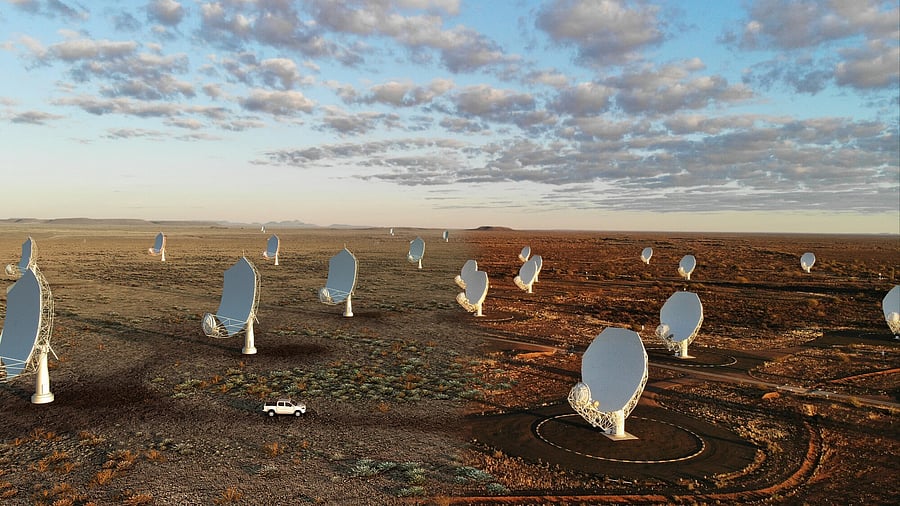
Artist's impression of the SKA project
Credit: SKA Observatory
High on Indian Space Research Organisation's (ISRO) success, the Narendra Modi-led government has also laid out investment plans for monetary contribution toward the Square Kilometre Array (SKA) Project, an international collaborative effort.
This tie-up between India and other nations seeks to develop the world's largest radio telescope called the Square Kilometre Array (SKA) project, which will study galaxies in the universe.
The SKA project will be a group of radio telescopes operating out of South Africa and Australia (headquarters) in two radio frequency ranges, and the Square Kilometre Array Observatory (SKAO) is a new intergovernmental organisation dedicated to radio astronomy, headquartered in the UK with ten countries - Australia, Canada, China, India, Italy, New Zealand, South Africa, Sweden, and the Netherlands participating.
The Union Cabinet recently approved India's participation in the SKA project, along with a financial commitment of Rs 1,250 crore, which is the initial step towards this ratification.
These new telescopes will scan the skies faster than any of its kind previously, mapping out visible galaxies in more detail, once constructed. The project also aims to make available the data about the evolution of our galaxy.
Survey data from the SKA observatory will provide deep insights into the early days of evolution of our galaxy, and the telescope will also search for signs of life outside Earth.
The SKA will be built in two phases in both places, with the first phase of construction of SKA1 having started in December 2022. It is expected to begin operations by 2029.
